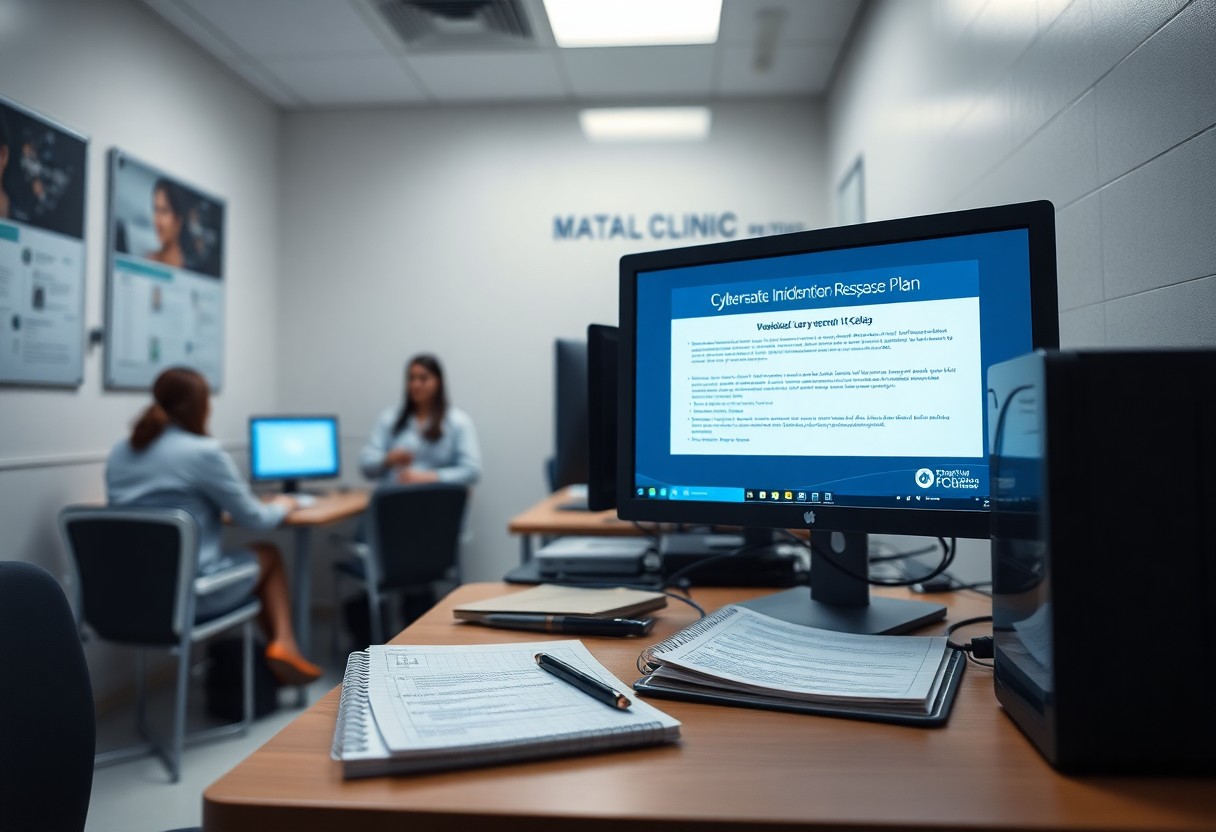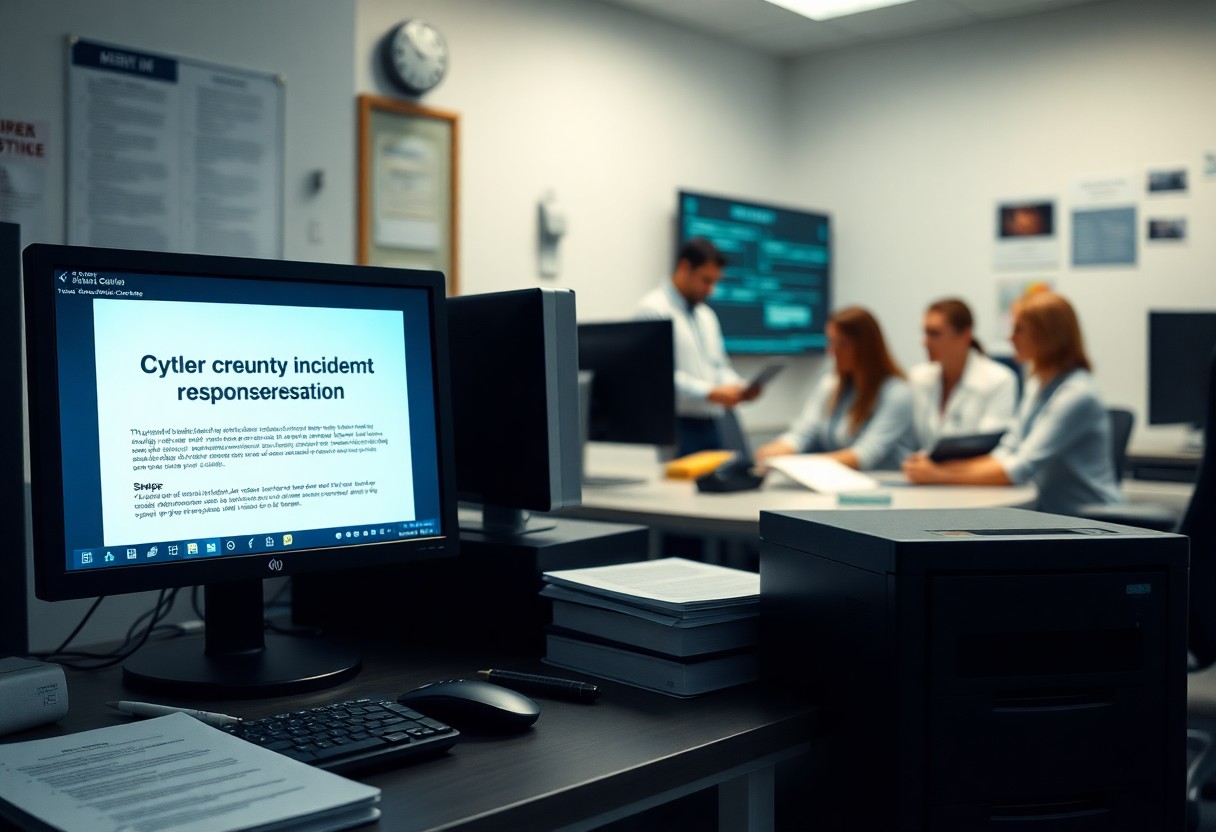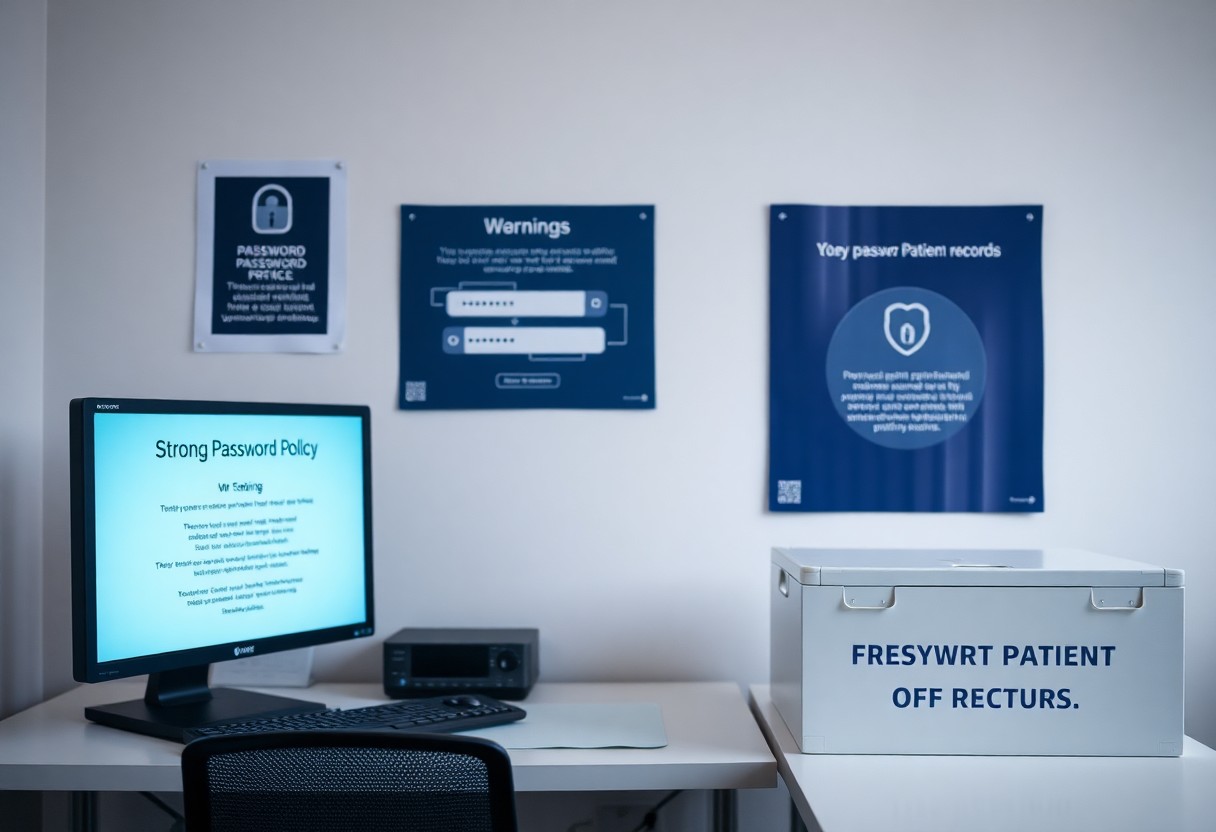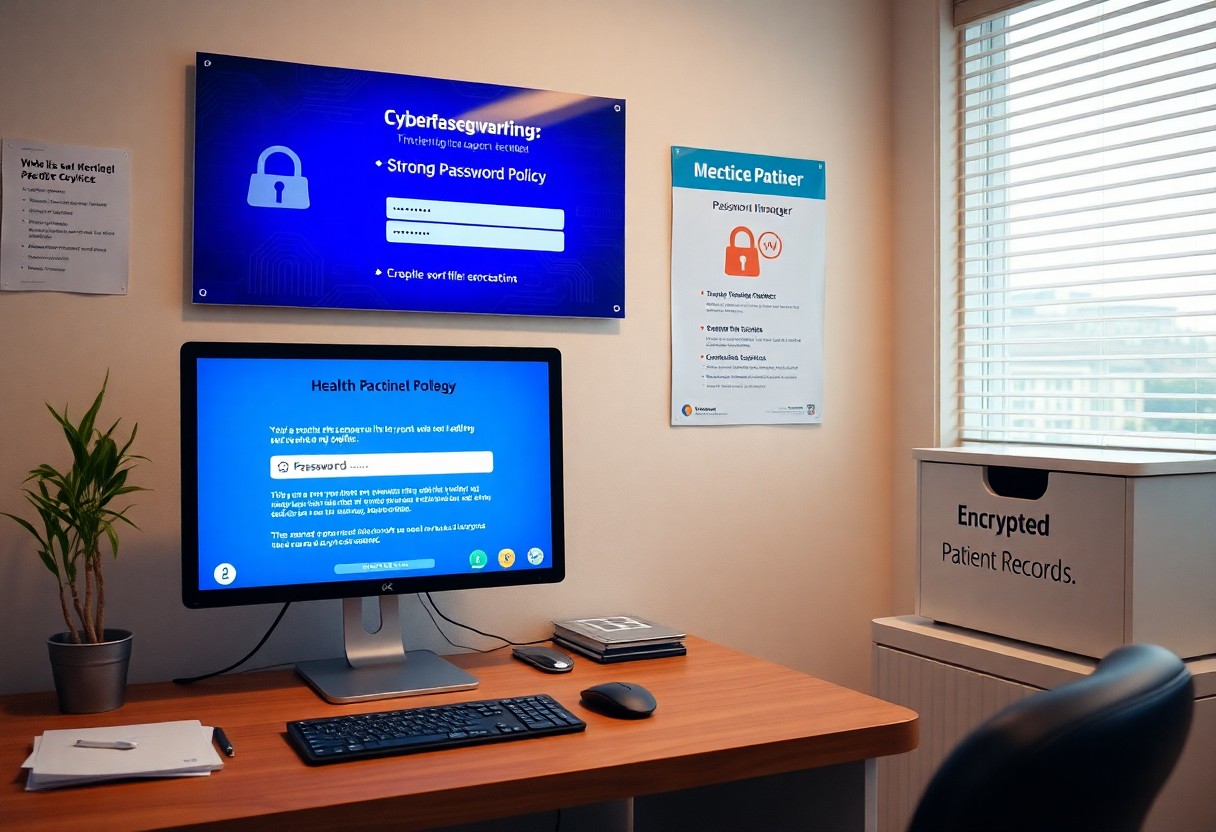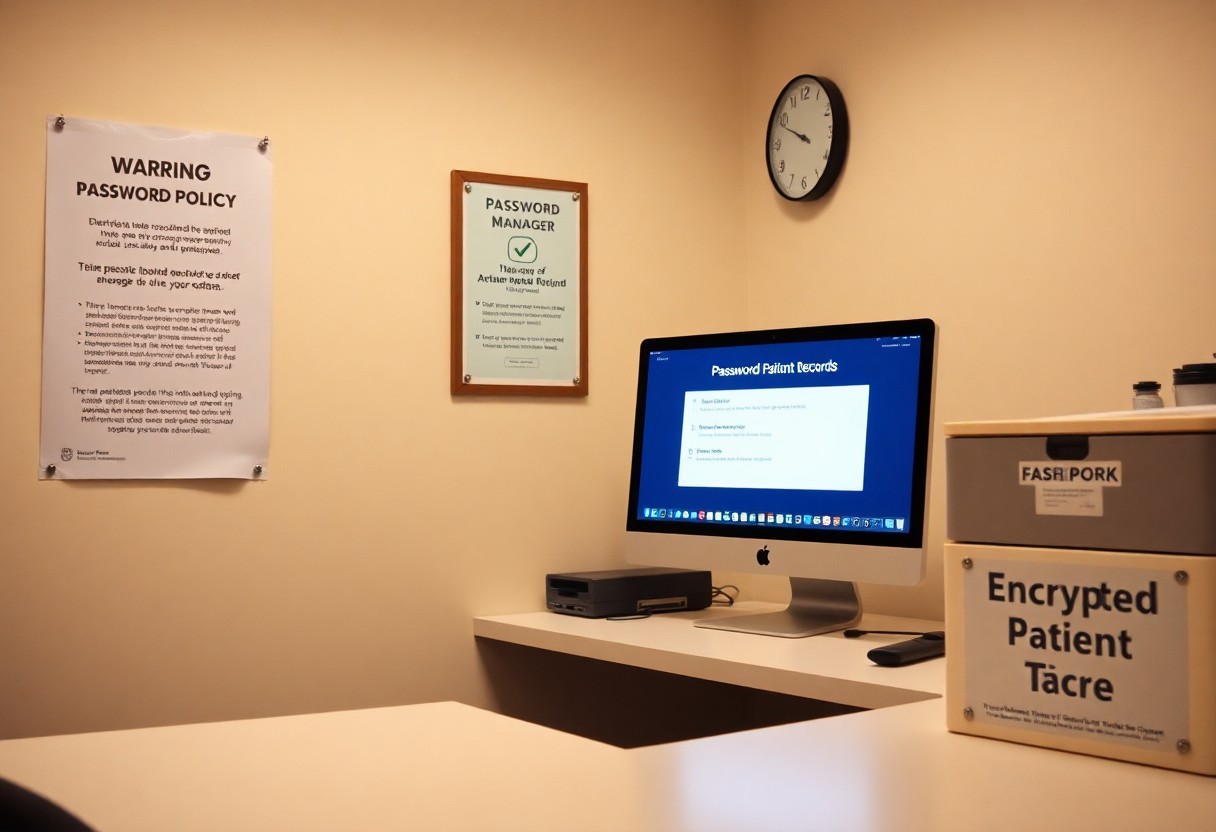Best practices for medical device cybersecurity start with knowing exactly what devices connect to your network. I’ve seen too many small healthcare practices assume their IT provider has this covered, only to find out later that unprotected devices were putting patient data at risk. The first step is keeping an up-to-date inventory of every device, from patient monitors to smart thermometers, and making sure each one has the latest security updates. Next, always change default passwords. I’ve seen breaches happen simply because a device was still using the manufacturer’s login credentials.
Strong, unique passwords combined with multi-factor authentication add an extra layer of protection. Network segmentation is another critical step. Medical devices should never share the same network as guest Wi-Fi or office computers. If an attacker gains access to one area, segmentation helps keep them from reaching everything else. Encryption also plays a major role.
Any data moving between devices should be encrypted to prevent unauthorized access. Finally, regular security training is a must. I always tell my clients that no system is secure if employees don’t know how to use it safely. Cyber threats evolve, but consistent updates and awareness go a long way.
Table of Contents
Over my years of experience, I’ve learned that protecting your medical devices is paramount for safeguarding patient data. Many small healthcare practices mistakenly believe their IT providers have everything covered. It’s vital to conduct an accurate inventory of all devices connecting to your network, and ensure each one adheres to the latest security measures. For more comprehensive insights on this important topic, check out my post on Med Device Cybersecurity Best Practices to enhance the security of your healthcare environment.

Key Takeaways:
- Inventory Management: Maintain a detailed and up-to-date inventory of all connected medical devices to identify potential vulnerabilities.
- Password Security: Always change default passwords on devices and implement strong, unique passwords along with multi-factor authentication.
- Network Segmentation: Keep medical devices on a separate network from guest Wi-Fi and office computers to isolate potential attacks.
- Data Encryption: Ensure that any data transmitted between devices is properly encrypted to safeguard against unauthorized access.
- Employee Training: Provide regular security training to staff, emphasizing the importance of recognizing threats and safe practices.
Understanding Your Medical Device Inventory
Your ability to manage cybersecurity effectively begins with a comprehensive understanding of your medical device inventory. This knowledge allows healthcare providers to identify vulnerabilities and ensure that all devices are secured against potential threats. By keeping a meticulous record of each device connected to your network, you position your practice to better safeguard patient data and mitigate risks. Additionally, regular audits and real-time monitoring help detect unauthorized access or emerging threats before they compromise sensitive information. Implementing strong access controls and software updates further strengthens cybersecurity for small healthcare practices, ensuring compliance with industry regulations. By fostering a culture of cybersecurity awareness among staff, healthcare providers can significantly reduce the likelihood of breaches and protect both patient safety and data integrity.
Importance of an Up-to-Date Inventory
Medical device inventories are fundamental to a secure healthcare environment. An updated inventory helps organizations quickly identify outdated devices that might lack security updates or are no longer supported by the manufacturer. Regular audits can reveal gaps that lead to security exposure.
| Benefits of an Up-to-Date Inventory | Consequences of Neglecting It |
| Enhanced security monitoring | Increased risk of data breaches |
| Streamlined compliance audits | Fines and legal consequences |
| Improved device management | Organizational inefficiency |
| Better knowledge of vulnerabilities | Patient data at risk |
Types of Devices to Include
With a comprehensive medical device inventory, you should account for various types of devices used within your healthcare setting. This not only includes traditional equipment but also extends to innovative technologies. Each category requires distinct attention to ensure security measures are appropriately applied.
| Categories of Medical Devices | Specific Examples |
| Monitoring Devices | Patient monitors, ECGs |
| Treatment Devices | Infusion pumps, lasers |
| Diagnostic Devices | X-rays, MRI machines |
| Connected Devices | Wearables, smart thermometers |
| Administrative Devices | Scheduling systems, billing software |
With an understanding of the various types of devices that should be included in your inventory, you can implement targeted security strategies. This includes everything from monitoring devices to those used for administrative tasks. Each device has unique risks, and it’s imperative to tailor your security measures accordingly. Knowing the types of devices in your network is proactive management that enhances your overall cybersecurity posture.
Implementing Strong Passwords
Some of the most significant vulnerabilities in medical devices stem from weak password practices. It’s important to prioritize strong password implementation to protect your network from potential breaches. By establishing strict password policies and adherence, you can significantly reduce the risk of unauthorized access to sensitive patient data.
Changing Default Passwords
There’s a major risk when devices are left with their default manufacturer credentials. I have seen numerous instances where breaches occurred simply because these passwords were never updated. Always take the time to change default passwords immediately upon installation.
Creating Strong, Unique Passwords
An effective way to defend against unauthorized access is by creating strong, unique passwords for each device. Utilizing a mix of uppercase letters, lowercase letters, numbers, and special characters enhances password strength significantly.
The best practice involves avoiding easily guessable information, such as birthdays or common words. I recommend using a password manager to help generate and store complex passwords securely. This way, you can maintain unique passwords for every device, which is imperative as repeated use can lead to multiple points of failure if one is compromised. Additionally, regularly updating these passwords keeps your devices secure from evolving cyber threats, further protecting sensitive patient information.
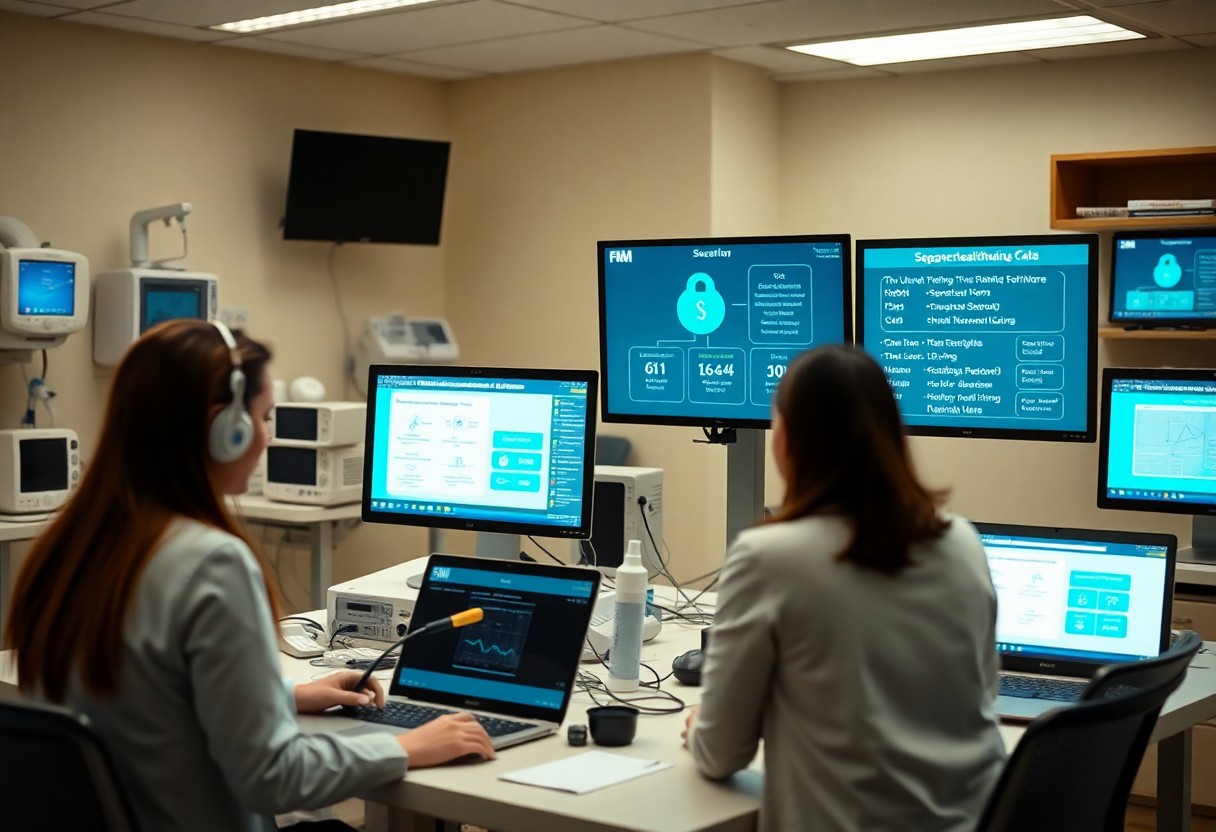
Utilizing Multi-Factor Authentication
Not implementing multi-factor authentication (MFA) can leave your medical devices vulnerable to unauthorized access. As cyber threats continue to evolve, adding this layer of security is crucial in safeguarding sensitive patient data and ensuring your healthcare practice runs smoothly.
What is Multi-Factor Authentication?
Utilizing multi-factor authentication involves requiring two or more verification methods to gain access to a device or network. This typically combines something you know (like a password), something you have (like a smartphone), or something you are (like a fingerprint), enhancing security beyond just a username and password.
How to Set Up Multi-Factor Authentication
To set up multi-factor authentication effectively, start by enabling it on every device that supports it. Check your device’s security settings and follow the prompts to activate MFA. You’ll often need to link it to a mobile authenticator app or receive codes via SMS or email. This two-step process significantly strengthens your defenses against potential breaches.
What you want to do is explore all the options available for multi-factor authentication. Most devices will allow you to choose between methods like SMS codes, email verification, or authenticator applications. I highly recommend using an authenticator app for its added security and convenience. Ensuring that each username and password combination is complemented by a unique verification method drastically reduces the risk of exposure. The implementation process is straightforward, and the peace of mind it brings is invaluable in today’s threat landscape.
Network Segmentation Strategies
Many healthcare organizations overlook the significance of network segmentation, yet it serves as a foundational step for enhancing medical device cybersecurity. By dividing your network into various segments, you can effectively minimize the risk of an attacker gaining access to sensitive patient data. Employing specific strategies for segmentation can help protect the integrity of your healthcare environment.
Defining Network Segmentation
While network segmentation refers to the practice of dividing a network into smaller, isolated segments, its ultimate goal is to restrict unauthorized access and improve overall security. By implementing this approach, you can ensure that different devices, such as medical equipment and administrative computers, operate on separate networks. This reinforces data privacy and fosters a robust environment.
Best Practices for Segmentation
Clearly defining network segments enhances control and security. You should allocate distinct segments for medical devices, administrative tasks, and guest access, effectively isolating each to reduce potential attack vectors. Implement firewalls and access controls between these segments to further strengthen barriers. Always conduct regular assessments to verify that your segmentation is working effectively and adjust as necessary. By doing so, you significantly lower your risk of a data breach.
The way you approach network segmentation can make a notable difference in your cybersecurity posture. Identify critical devices and create individual segments for them, allowing for tailored monitoring and restrictions. Keep guest networks completely separate from the medical devices, as this limits the possibility of threats infiltrating sensitive areas. Additionally, implementing strict access controls and routinely reviewing your segmentation setup not only secures your network but also fosters a culture of vigilance within your organization, ensuring that you stay one step ahead of potential cyber threats.
Data Encryption Techniques
Despite the critical nature of data protection in healthcare, many practices overlook the implementation of strong encryption techniques for their medical devices. Encryption acts as a fundamental safeguard for sensitive patient information transmitted between devices, effectively rendering data useless to unauthorized users. By ensuring that all data is encrypted, you significantly reduce the risk of breaches and help maintain compliance with regulatory standards.
Importance of Encryption
If you want to protect patient data and maintain trust in your practice, the importance of encryption cannot be overstated. Encryption transforms sensitive information into unreadable code, ensuring that only authorized individuals can access it. This is particularly vital in healthcare, where data breaches can lead to severe legal consequences and erosion of patient trust.
How to Implement Encryption for Medical Devices
Encryption is an crucial strategy when it comes to safeguarding your medical devices and the data they handle. Start by identifying all devices on your network and assess their built-in encryption capabilities. Make sure to enable encryption features and, when necessary, opt for additional encryption solutions to protect data in transit. Regularly evaluate your encryption protocols and stay updated on industry standards to ensure that your practice is using the most effective techniques for protecting sensitive data.
With a proactive approach, you can implement encryption by first conducting a comprehensive audit of your medical devices. Ensure that each device’s encryption functionality is enabled and regularly updated. In cases where devices do not support encryption, consider utilizing a secure VPN to encapsulate all data traffic. Additionally, integrate your encryption measures with access controls to further enhance security. By taking these steps, you will not only protect patient information effectively but also reinforce the integrity of your healthcare practice.
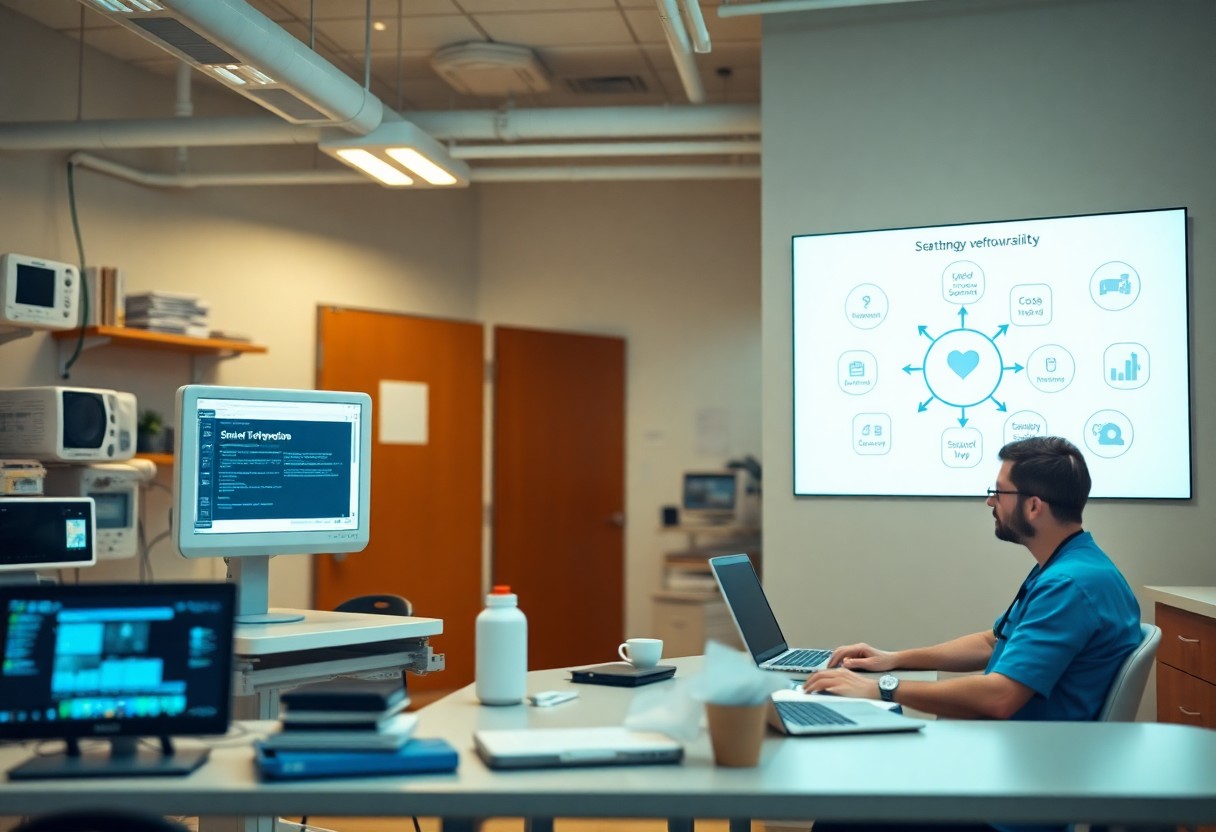
Conducting Regular Security Training
All healthcare practices should prioritize conducting regular security training to ensure that all employees understand their role in safeguarding patient data. Staying informed about the latest cybersecurity threats and best practices is vital for maintaining a secure environment, as the landscape of digital threats is constantly evolving. Establishing a culture of security awareness protects not just the organization but also the patients we serve.
Developing a Comprehensive Training Program
The foundation of your security training should be a comprehensive program that addresses various aspects of device security, data protection, and incident response. This program should be tailored to fit your specific practice and cover practical scenarios employees may encounter. Regular updates and reinforcement help maintain the effectiveness of the training.
Keeping Staff Updated on Cybersecurity Threats
For staff to effectively counteract cybersecurity threats, it is vital to provide ongoing education regarding emerging risks and the tactics employed by attackers. Frequent workshops, newsletters, or even security briefings can help employees stay aware of the current landscape.
Staff should actively engage with this information to guard against evolving threats. By focusing on awareness, especially around phishing scams and ransomware attacks, your team can learn to identify and report suspicious activities before they escalate. Online training modules are an excellent way to ensure your team receives consistent updates on the latest cyber threats. It’s empowering for your staff to feel equipped with knowledge, ultimately fostering a robust security culture within your practice.
Summing up
Now, implementing best practices for medical device cybersecurity begins with a thorough understanding of the devices connected to your network. I advise keeping an up-to-date inventory and ensuring that every device has the latest security updates. Changing default passwords, utilizing strong, unique passwords with multi-factor authentication, and segmenting networks are imperative to fortifying your defense against breaches. Additionally, I recommend encrypting data and prioritizing regular security training for employees to foster a culture of awareness. By taking these steps, you can significantly reduce the risks to patient data and enhance your overall cybersecurity posture.
FAQ
Q: Why is it important to maintain an up-to-date inventory of medical devices in a healthcare setting?
A: Maintaining an up-to-date inventory of medical devices ensures that healthcare practices have a clear understanding of all connected devices on their network. This knowledge allows for better risk assessment and proactive measures to secure those devices, reducing the chances of unprotected devices compromising patient data.
Q: How can changing default passwords help enhance medical device security?
A: Changing default passwords on medical devices is imperative because manufacturers often provide easily guessable credentials as defaults. If these remain unchanged, they can be a significant vulnerability that attackers exploit to gain unauthorized access to sensitive information. Using strong, unique passwords enhances security and minimizes risks.
Q: What role does multi-factor authentication play in securing medical devices?
A: Multi-factor authentication adds an additional layer of security by requiring users to provide two or more verification factors to access a device or system. This method significantly decreases the likelihood of unauthorized access, as it demands more than just a password, making it harder for attackers to compromise medical devices.
Q: Why is network segmentation important for medical device security?
A: Network segmentation involves dividing a computer network into smaller segments for improved security management. By ensuring that medical devices operate on a separate network from guest Wi-Fi and office computers, healthcare facilities can restrict the access of potential attackers, limiting the spread of malware and protecting sensitive data.
Q: How does encryption contribute to the security of medical devices?
A: Encryption protects data transmitted between medical devices by translating it into a code that can only be deciphered by authorized users. This process prevents unauthorized access during data transfers, thereby safeguarding patient information and maintaining confidentiality even if the data is intercepted.
Q: What type of security training should employees in healthcare settings receive?
A: Employees should receive training that focuses on recognizing potential cyber threats, adhering to best practices for device usage, and understanding policies related to data security. Regular updates and refreshers are beneficial, providing employees with the knowledge to act responsibly and effectively protect sensitive information.
Q: How often should medical devices be updated to ensure security measures are effective?
A: Medical devices should receive updates regularly, as manufacturers frequently release patches and updates to address vulnerabilities. Establishing a routine check for updates ensures that all devices are equipped with the latest security features, thus minimizing the attack surface for potential threats.



